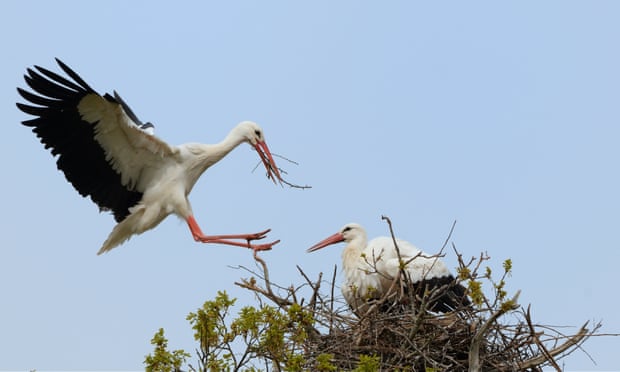White storks nesting on top of an ancient oak tree could become the first wild pair to successfully breed in Britain for hundreds of years.
The enormous birds are brooding three eggs on the rewilded Knepp estate, in Sussex, as part of a project to reintroduce the species to south-east England.
“It’s absolutely thrilling,” said Isabella Tree, the author and estate’s owner with her husband Charlie Burrell. “She is sitting on three eggs and we feel like parents – after torrential rain we rush out to see if their nest is still there.”
The Knepp estate is close to the West Sussex village of Storrington, referred to as Estorchestone or “homestead of the white storks” in the Domesday Book. Although the occasional wild stork flies across Britain, the birds are believed not to have successfully bred here since 1416, though some believe wild storks fledged chicks as late as the English civil war.
The storks have been brought back in a collaboration between three landowners in south-east England, the Cotswold Wildlife Park, Warsaw Zoo, the Roy Dennis Wildlife Foundation and the Durrell Wildlife Conservation Trust, an expert in restoring endangered bird species.
Birds with clipped wings from sanctuaries in Europe were introduced into large, fox-proof, open-topped pens three years ago. Conservationists hoped these would attract passing wild storks, which has happened.
Additional birds bred in captivity will be released over the next five years, with the aim of a self-sustaining wild population by 2030.
Ros Kennerley, the UK programmes manager for the Durrell Wildlife Conservation Trust, said: “They are not globally endangered but they are a really charismatic large bird that symbolises rebirth and which people can see. They can be a means to inspire people about the natural world.”


